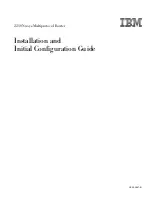
513
Configuring MPLS OAM
Overview
MPLS Operation, Administration, and Maintenance (OAM) provides fault management tools for the
following purposes:
•
MPLS data plane connectivity verification.
•
Data plane and control plane consistency verification.
•
Fault locating.
These fault management tools include the following types:
•
On-demand
tools
—Tools that must be triggered manually, such as MPLS ping and MPLS
tracert.
•
Proactive
tools
—Tools that are triggered by the system automatically, such as BFD for MPLS,
and periodic MPLS tracert.
You can use these tools to detect and locate faults of LSPs, MPLS TE tunnels, and MPLS PWs.
MPLS ping
MPLS ping tests the connectivity of an LSP tunnel, an MPLS TE tunnel, or a PW. At the ingress node,
MPLS ping adds the label associated with a tunnel into an MPLS echo request and sends it to the
egress node over the tunnel. The egress node processes the request and returns an MPLS echo
reply to the ingress node. An MPLS echo reply with a success notification indicates that the tunnel is
available for data forwarding. An MPLS echo reply with an error code indicates that the tunnel has
failed.
MPLS tracert
MPLS tracert displays the path that an MPLS LSP tunnel or an MPLS TE tunnel travels from the
ingress to the egress to locate errors on the tunnel. MPLS tracert consecutively sends MPLS echo
requests along the LSP tunnel, with the TTL increasing from 1 to a specific value. Each hop along the
tunnel returns an MPLS echo reply to the ingress due to TTL timeout so the ingress can collect
information about each hop along the tunnel. This information allows you to locate the failed node or
access information for each hop, for example, the label allocated by each downstream hop.
BFD for MPLS
BFD for MPLS uses a BFD session to proactively verify the connectivity of an LSP tunnel, an MPLS
TE tunnel, or a PW tunnel.
BFD for MPLS performs the following operations:
1.
Establishes a BFD session between the ingress and egress of the tunnel to be inspected.
2.
Adds the label associated with the tunnel into a BFD control packet at the ingress.
3.
Sends the packet to the egress node over the tunnel.
4.
Determines the tunnel status according to the BFD control packet returned by the egress.
When BFD detects a connectivity failure, it triggers the pre-configured action, such as FRR or path
protection switching, to ensure uninterrupted traffic forwarding.
A BFD session for LSP, MPLS TE tunnel, or PW connectivity verification can be established in one of
the following modes:
Содержание HPE FlexNetwork MSR Router Series
Страница 10: ...viii Index 540 ...















































